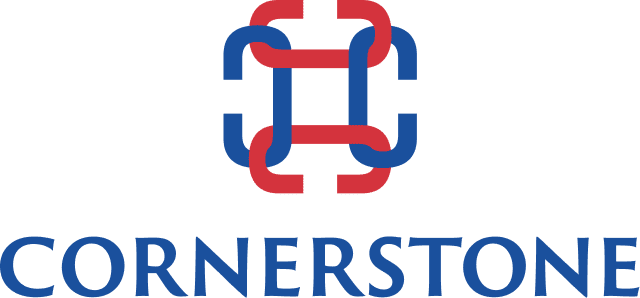HR Can Lead the Fight Against COVID-19
We don’t know where we are on the COVID-19 curve of confusion and destruction, but how we look back on Spring 2020 depends heavily on how global business responds to the challenge.
Government actions are key, but government actions are also by default slow. An important characteristic of the new pandemic is the astonishing speed with which the virus establishes itself in a population. Statistics are made obsolete overnight.

Corporate HR by default is on the front line. The Human Resources function is to organize and meet the needs of people in a manner that meets the needs of the organization. A basis is efficient, effective and swift communication.
While the immediate threat is to people, the outcome could be a social and economic collapse unimaginable only a few decades ago. It is a very real threat.
My perspective is here that people are starting to get ready now, but they missed the start. Unless it is a really international company, most organizations are just not ready. Even more reason for business leaders and their HR departments to get up to speed as fast as they can.
From years of business engagement in China and Europe, I see three essential considerations for any Human Resources function in managing the current environment.
- Show care for employees
- Undertake the basic measures for prevention and health and “go beyond”
- Prepare and execute a Business Continuity Plan (BCP)
Show Care for Employees
They are your primary concern. Having the trust of employees that “they are in good leadership hands” is crucial to avoid panic, resistance and lack of engagement. This is the starting line.
Undertake Basic Measures For Prevention And Health
Employees must be given accurate information about ways to prevent the spread of infection as well as the means to act on that information. Share specific public health guidelines and direct employees to official sources of information. In addition to country-level websites, here are some other resources:
https://www.who.int/emergencies/diseases/novel-coronavirus-2019/situation-reports
https://www.youtube.com/watch?time_continue=4&v=mOV1aBVYKGA&feature=emb_title
You can also use simple but comprehensive video material available from the WHO which can be used for training employees.
The “basics” – e.g. wash hands frequently for 20 sec minimum — need also to be communicated through multiple channels including posters, leaflets, webinars, emails etc
Prepare And Execute A Business Continuity Plan (BCP)
The BCP is a comprehensive strategy that is critical to protecting not only the health of employees but the economic and organizational health of the enterprise. There are six components.
Leadership
This arguably is the most important component, given the dire consequences of failure to act appropriately in this crisis. There are two aspects of Leadership to consider
- The appointment of a Crisis Team Owner, or Manager, fully accountable for execution and compliance with the measures taken.
- Planning for leadership continuity in the absence of critical leadership functions.
At times like this, organizational leadership assumes even more importance. Leaders are expected to see into the future. They are not there to manage for today. So when faced with a crisis such as COVID-19, the leader is looking at tomorrow and, in that process, should be going beyond to prepare for what others may not yet envision.
For example, as I write, governments issue new directives every day. Businesses of course need to follow, but they can also go beyond. For example, if face-to-face meetings should be kept to only the vital one, why not ensure all meetings are ‘virtual’, using the technology available today.
Human Resources
This requires a review of policies such as leave of absence, absenteeism, travel, workplace closure, selective recall from affected countries and flexible work arrangements.
Privacy protection policy of employee health data and ensuring all employees’ contact information is up-to-date.
Virus Protection & Containment
All employees need to be familiar with infection control and good personal hygiene. A robust sickness surveillance process should be in place.
Visitors as well as employees should be screened and company premises cleaned and disinfected.
An adequate supply of PPE (Personal Protection Equipment) must be maintained and training undertaken in the correct use of masks, gloves and disinfectants, etc
Stakeholder Management
Employees are far from being the only group requiring special attention. Continuity planning and protection is required for essential suppliers, services providers and customers
Steps should be taken to understand the BCP of suppliers and service providers and to communicate your processes. Essential customers need to be identified and contacted and plans drawn up to meet their needs.
Planning should include the potential need to activate alternative suppliers and sources.
Communication
Finally, the best planning has little value if it is not successfully communicated. The need to communicate with diverse audiences calls for accountability in the form of a project communications leader and specific rules of communication.
Employees in particular must have a clear understanding of the BCP and how it affects them. It is recommended that a specific channel of communication be set up just to traffic enquiries.
In addition, other stakeholder groups should be identified and approached to ensure understanding of all relevant crisis measures.
WHAT NOT TO DO
Almost as important in the circumstances is knowing what not to do:
- Creating a “one-size-fits-all” policy set. People get affected in different ways and providing a level of ownership to management will increase trust and engagement.
- Keeping other operations in the dark. The anxieties and concerns of regional and global staff need to be addressed and it is essential to demonstrate empathy and support towards all colleagues.
- Treating absences as “unpaid leave”. This will just add to staff’s stress and financial burden at an already challenging time. Expecting them to forego salary for reasons beyond their control may be seen as unfair and undermine organizational trust.
- Underestimating adverse and long-term psychological impact on your staff. This is a time to show empathy and compassion not only as an HR leader but also as an organization. It is a time when emotions are running high, and people are affected more deeply, at the psychological level, than you may think.
- Lack of visibility of your top leaders: as in any crisis, your top leaders must make their presence felt through direct communications. This will go a long way in building morale and assuring your staff that the organization truly cares.
In summary, this is the time to show leadership and “go beyond” wherever we can, to show care and strengthen trust among all of us. Crisis offers also great opportunity to show that we walk the talk and values are ‘lived’ in the decisions we make and the actions we show.
Leave a comment here, or contact me directly at peter-buytaert@cornerstone-group.com





